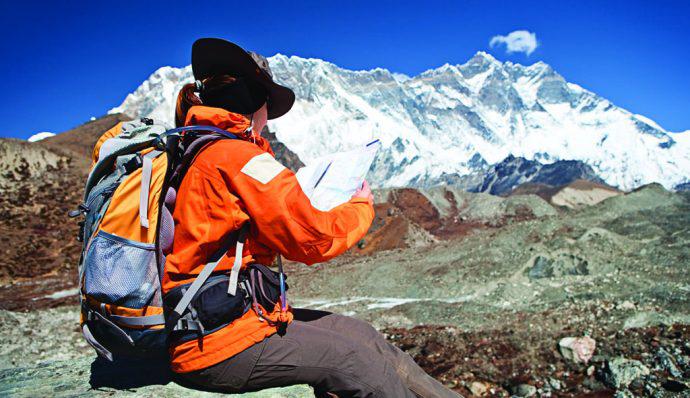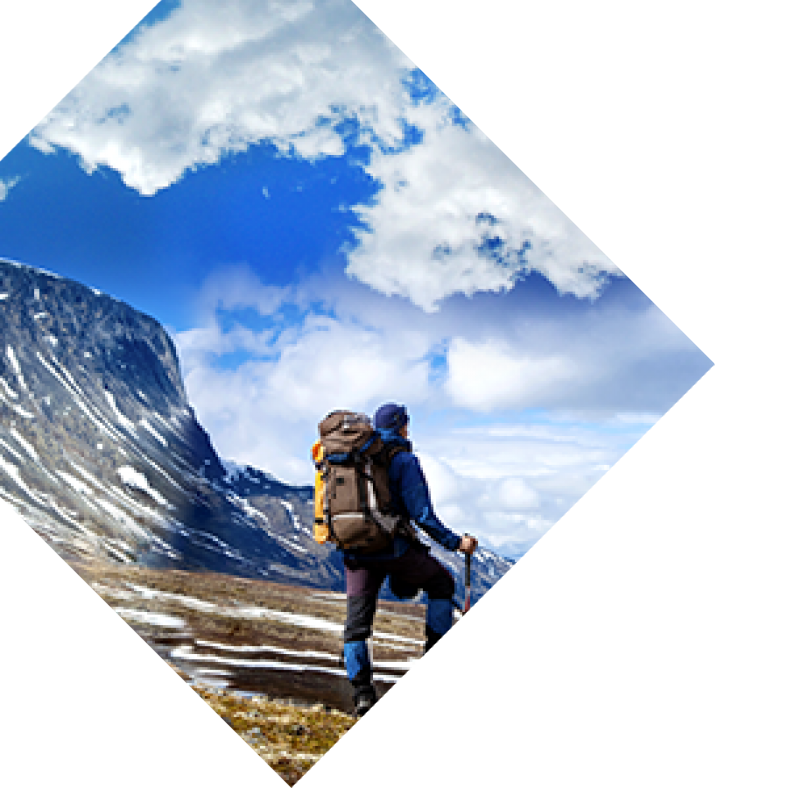The sport of hiking is growing, and it’s easy to see why. More than ever, people need to leave the hustle and bustle of daily life behind in favor of the quiet serenity offered by Mother Nature. It seems ideal: trade pavement for dirt, traffic horns for chirping birds, and towering skyscrapers for majestic tree trunks. As a newbie, you are likely preoccupied with Hollywood-driven fears such as wild animal encounters and life-threatening cliff-hangers. Look, I get it! Ferocious grizzlies and exposed ledges are the things of lore and sure do make for a good story. But in reality, those situations are few and far between. While there is a slight possibility something extreme will happen on the trail, it’s more likely that you’ll get taken down by an evil cotton T-shirt. Read on to learn more about some hiking safety common mistakes and learn how to avoid them.
Hiking Safety: Seven Common Mistakes
1. Not Understanding Your Map
As a good hiker, you understand that you need to bring a map on your hike. But, what you may not realize is that the type of map you bring matters, as does your ability to read it! Too often, beginning hikers snag a road map for use on the trail, thinking it will be good enough. Or, even worse, they plan to rely on the trusty map app on their smartphone. Folks, this is not a good idea! Not all squiggly lines are created equal, and road maps are very different from the topo maps that are used in the hiking world. Topo maps frequently focus on a specific area, offering an up-close snapshot of your trail system. This makes it easier to understand where you are going and where you are, should the day not go as planned. And, if you learn to read the map correctly, you can plan for the terrain you will encounter on trail. I learned this the hard way over a decade ago. A group of friends and I set out to hike La Plata, one of Colorado’s 14ers. We chose a lesser-known trailhead and all assumed that the correct path would be easy enough to follow. Fast-forward to a few hours later when we were standing on the summit of a peak….but it sure wasn’t La Plata. I knew this because I could see La Plata across the valley, taunting me and my poor life choices! As for that smartphone? Cold weather frequently zaps the battery, leaving you bereft of any type of map. Even if you have plenty of battery life, there is a good chance that smartphone maps won’t recognize the trail you are on, which means you are essentially hiking blind. Do yourself a favor and snag a quality paper map of your hiking trail before heading out for the day.
2. Wearing Cotton
We’ve all likely heard the old adage by now: cotton kills. While that sounds very extreme, there is a reason the expression came into being. When you hike, you exert a lot of energy and as a result, you sweat. If you are wearing cotton, all this moisture fills up the air pockets in the fabric, leaving you with a wet layer sitting next to your skin. If it is cold outside, this wet cotton will feel exceptionally chilly as it sits next to your body. Yes, this is uncomfortable, but it can also be downright dangerous if it leads to hypothermia. Hypothermia is when your body temperature drops abnormally low, leading to disorientation, shivering, and occasionally death. Sounds depressing, right? These days, outdoor manufacturers offer “wicking” fabrics that transfer your body sweat away from your skin to the outside of the clothing layer. This keeps the chilly moisture away from your core. It’s a good idea to wear next-to-skin layers such as this to ensure a fun and safe day on the trail.
3. Breaking in Boots
You will hear a lot of hiking horror stories on the trail (almost always told in fun!) but I’d wager that a large majority of them stem from uncomfortable footwear situations. You see, your hiking boots are a critical piece of gear. You’ll spend a lot of time in them, and if your feet are happy, there is a good chance that you will be happy too! This is why brand-new boots are problematic. Sure, they look shiny and new, but the stiff upper material will wreak havoc on your feet, causing hot spots, blisters and a whole lot of pain. To avoid this, spend a few weeks breaking in your hiking boots before hitting a trail. Wear them while mowing the lawn, walking your dog, or even going to the grocery store. It really doesn’t matter where you wear them, but the idea is to get the material adjusted to your feet so that you don’t experience a Stage-Five meltdown while in the backcountry.
4. Getting a Late Start
Mom taught us that being on time is important, and this rule definitely applies to hiking. It may not feel like a big deal to show up at the trailhead at 3 p.m., but you may regret that decision later when you’re stumbling back to your car around midnight. This mistake is costlier in high-elevation states such as Colorado. Thanks to the high alpine environments, nasty lightning storms frequently move in above the tree line around lunchtime or early afternoon. If you are hiking above the tree line when one of these storms rolls in, it can be very dangerous. Many people have been struck by lightning. There is a general rule in mountainous areas: get off the trail by lunch. Of course, in order to do so, you are going to have to get an early start in the morning. See how it comes full circle?
5. Littering
If there is a single mistake that is really going to anger your fellow hikers, it is this one. There is absolutely no reason or excuse to ever leave any type of litter on the trail while hiking. This includes food wrappers, toilet paper, Kleenex, and food scraps themselves. In fact, before you hit the trail, take some time to familiarize yourself with Leave No Trace. LNT is the de facto set of trail guidelines that helps outdoor enthusiasts understand the best ways to deal with various situations from trash pickup to selecting a campsite. Bathroom etiquette is one such category that frequently confuses new hikers: what do I do if I have to poop? After all, this is a form of litter, so it’s a good idea to know how to handle each situation before it occurs. A word to the wise: if you can pack it in, you can pack it out. Always try to leave your hiking trails as good as or better than the way you found them.
6. Underpacking
When you are heading out for a mellow day hike, it can be tempting to avoid a heavy backpack by eliminating various gear items. After all, who likes carting around a ton of weight? This mistake can get you in a lot of trouble if you don’t have enough experience to understand which items can be cut and which items are essential. Knowing how to cull through your gear takes practice and knowledge, and this will likely come with time on the trail. But, if you try to cut weight early on, there is a good chance you will leave something in the car that you will really regret later. I learned this mistake once upon a time when I opted to cut all of 15 ounces from my day pack by leaving my hardshell jacket back at the car. The sun was shining and there wasn’t a cloud in the sky; what could go wrong? Turns out, a lot! We crested the ridgeline and it was like we left The Shire and entered Mordor. High winds whistled through my shirt and rain drops sprinkled on my exposed skin. I had to hightail it back to the car before nastier weather rolled in, and I was lucky that nothing worse happened to me. Learn from my mistakes: Carry everything you will possibly need until you are savvy enough to understand the difference between a nice-to-have and an essential.
7. Speeding Downhill
So frequently, hikers are huffing and puffing on the climbs while eagerly anticipating the perceived luxury of the downhill return. After all, hiking downhill is much easier than trudging upward, right? There is a common expression in the hiking world that was made famous by accomplished American alpinist Ed Viesturs: “Getting to the summit is optional; getting down is mandatory.” Going downhill may seem like a breeze, but it is likely the time when your mistakes will happen. You are tired, your muscles are fatigued, and maybe you are just a little too excited to get back to the car. This is when you will make mistakes if you aren’t mentally prepared. Keep this in mind once you turn your trajectory back to the trailhead. Hike methodically, keep your speed under control, and make deliberate decisions on trail choices. No hike is worth any type of physical harm.



